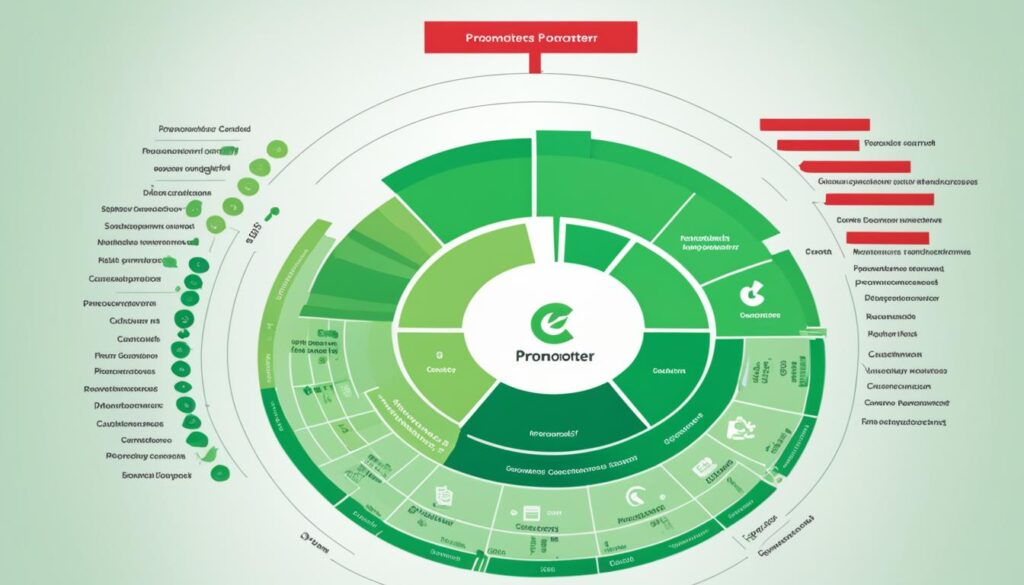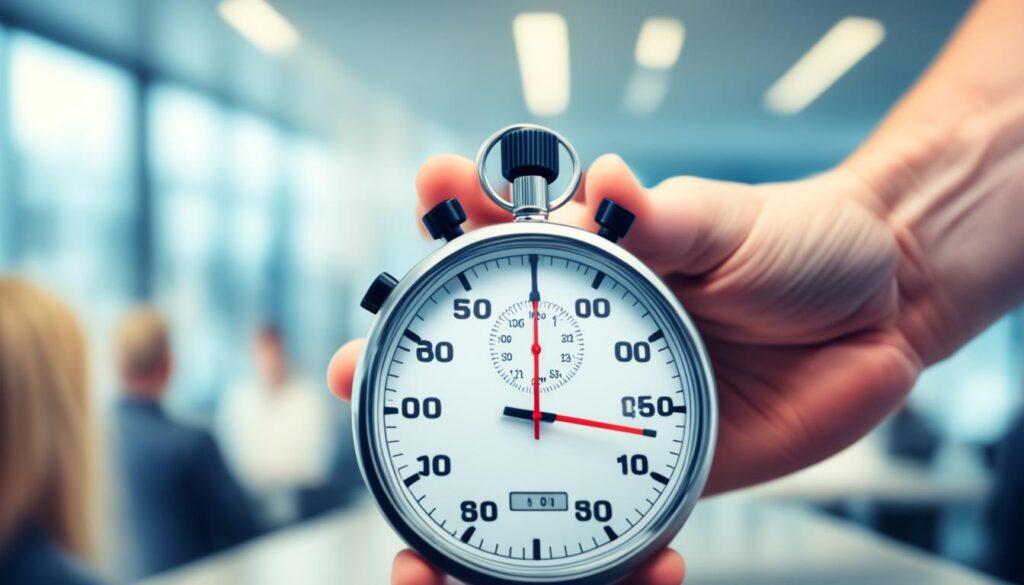When it comes to measuring and improving customer experience, businesses need to rely on the right key performance indicators (KPIs) and metrics. These powerful tools allow you to quantify and evaluate various aspects of customer satisfaction, loyalty, and overall experience.
In this article, we will explore 10 essential customer experience KPIs and metrics that can help you gauge your performance and make informed decisions. From measuring customer satisfaction to analyzing feedback and tracking interactions, these metrics will provide valuable insights into how to enhance your customer experience.
By measuring customer experience using these KPIs, you can uncover areas for improvement, evaluate the effectiveness of your customer service, and ultimately create a more customer-centric culture within your organization. Are you ready to take a deeper dive into these essential metrics? Let’s get started!
Customer Churn Rate
Customer churn rate is a key metric that measures the percentage of customers who stop subscribing to a service over a given period of time. A low churn rate indicates customer satisfaction and loyalty, which are indicators of a superior customer experience.
Reducing churn rates should be a priority for businesses, as it is more cost-effective to retain existing customers than to acquire new ones. By focusing on enhancing the customer experience and addressing their needs, businesses can improve customer loyalty and reduce churn.
One factor that affects churn rate is the customer effort score. The customer effort score measures the ease or difficulty of completing a purchase or other interactions with a company. By minimizing customer effort and making the customer journey as smooth as possible, businesses can create a positive experience and increase customer retention.
Providing excellent customer service and actively engaging with customers can also help in reducing churn. By proactively resolving issues, addressing concerns, and consistently delivering on promises, businesses can build trust and loyalty among their customers.
Next, we’ll explore another significant metric for measuring customer loyalty and satisfaction – Net Promoter Score (NPS).
Net Promoter Score
Net Promoter Score (NPS) is a widely used metric that helps businesses assess customer loyalty and measure customer retention. It provides valuable insights into the overall sentiment of customers, allowing businesses to identify opportunities for improvement and enhance the customer experience.
To calculate NPS, businesses ask customers a single question: “How likely are you to recommend our product/service to a friend or colleague?” Customers respond on a scale of 0 to 10, with 0 indicating not likely at all and 10 indicating extremely likely.
NPS divides customers into three categories:
- Promoters (score 9-10): Customers who are highly likely to recommend the product/service. They are loyal and enthusiastic about the brand.
- Passives (score 7-8): Customers who are satisfied but not necessarily loyal or enthusiastic. They may easily switch to a competitor if offered a better option.
- Detractors (score 0-6): Customers who are unlikely to recommend the product/service. They may have had a negative experience and could potentially harm the brand’s reputation.
To calculate the NPS, subtract the percentage of detractors from the percentage of promoters. The resulting score can range from -100 to +100.
Businesses can use the NPS to gain valuable insights into customer loyalty and satisfaction, as well as to benchmark their performance against competitors. By analyzing the feedback and suggestions provided by both promoters and detractors, businesses can identify areas for improvement and take strategic actions to enhance the customer experience and increase customer retention.

Net Promoter Score provides businesses with valuable insights into customer loyalty and retention. By understanding customer sentiment and making improvements based on feedback, businesses can enhance the overall customer experience and drive customer loyalty.
Customer Satisfaction
Customer Satisfaction Score (CSAT) is a crucial metric that measures how satisfied customers are with a specific interaction or experience. It provides businesses with valuable insights into their performance and helps them gauge whether they are meeting or exceeding customer expectations.
A high customer satisfaction score indicates a customer-centric culture, where the needs and preferences of customers are prioritized. It demonstrates that a company values its customers and is committed to providing them with exceptional service.
Research has shown that companies with high customer satisfaction scores also experience improved customer retention rates. When customers are satisfied, they are more likely to remain loyal to a brand and continue purchasing its products or services. This not only strengthens the customer relationship but also contributes to the long-term profitability and success of the business.
By prioritizing customer satisfaction and constantly striving to meet and exceed customer expectations, businesses can foster a customer-centric culture that ultimately leads to improved customer retention and stronger customer relationships.
Key Takeaways:
- Customer Satisfaction Score (CSAT) measures how satisfied customers are with their interactions or experiences.
- A high customer satisfaction score indicates a customer-centric culture.
- Companies with high customer satisfaction scores experience improved customer retention.
- By prioritizing customer satisfaction, businesses can strengthen customer relationships and foster loyalty.

Average Resolution Time
Customer support efficiency plays a crucial role in delivering excellent customer service experiences. One of the key metrics that businesses use to measure this efficiency is the average resolution time. This metric refers to the average time it takes for a customer care agent to resolve a customer issue.
Fast resolutions are highly valued by customers, as they directly contribute to their overall satisfaction. In fact, a survey conducted found that 73% of customers consider fast resolutions to be the most important component of a good customer service experience.
By reducing the average resolution time, businesses can enhance customer support efficiency and provide prompt solutions to customer queries and concerns. This not only leads to happier customers but also improves the overall customer service experience.
“Efficient customer support is essential for ensuring a positive customer experience. Fast resolutions contribute significantly to customer satisfaction and loyalty.”
Businesses can achieve faster resolutions by implementing efficient customer support systems and empowering their customer care agents with the right tools and information. This includes comprehensive training, access to a knowledge base, and streamlined communication channels.
It is worth noting that fast resolutions alone do not guarantee a good customer service experience. The quality of the resolution and the manner in which it is delivered also play important roles. Therefore, businesses should strive for both speed and effectiveness in resolving customer issues.
Key Takeaways:
- Average resolution time is a customer service KPI that measures the average time it takes to resolve customer issues.
- Fast resolutions are highly valued by customers and contribute to a positive customer service experience.
- Efficient customer support systems and well-trained agents are key to achieving faster resolutions.
- Faster resolutions should be complemented by effective and quality solutions to ensure a good customer service experience.
Providing fast resolutions not only demonstrates customer support efficiency but also showcases a commitment to delivering exceptional customer service. By focusing on reducing the average resolution time, businesses can create a positive impression on their customers and foster long-lasting relationships.

Customer Acquisition Rate
When it comes to business growth, acquiring new customers is essential. The customer acquisition rate measures how effectively a company can attract and win new customers. To achieve higher acquisition rates, it is crucial to focus on providing a better customer experience throughout the entire buyer journey.
By optimizing the experience, businesses can create a more engaging and satisfying interaction for potential customers. This can be achieved through personalized marketing and sales campaigns that resonate with their needs, preferences, and pain points. By understanding their target audience and crafting targeted messages, businesses can increase the chances of acquiring new customers.
In addition, incentivizing prospects to make a purchase can significantly impact customer acquisition rates. Offering exclusive discounts, limited-time offers, or free trials can entice potential customers to choose your brand over competitors. By providing a seamless and enjoyable experience during the onboarding process, businesses can effectively convert prospects into loyal customers.
FAQ
What is customer churn rate?
Customer churn rate is a metric that measures the percentage of customers who stop subscribing to a service over a given period of time. It is an important indicator of customer satisfaction and loyalty.
How can I reduce churn rates?
To reduce churn rates, it is essential to focus on improving customer experience. This includes providing excellent customer service, addressing customer concerns promptly, and continuously meeting or exceeding customer expectations.
What is Net Promoter Score (NPS)?
Net Promoter Score is a widely used metric for assessing customer loyalty. It is calculated by asking customers one question: “How likely are you to recommend our product/service to a friend or colleague?” NPS provides insight into overall customer sentiment and helps identify areas for improvement.
How can I increase customer retention?
To increase customer retention, it is important to analyze customer feedback, identify pain points, and take proactive steps to address them. By continuously improving the customer experience and providing value-added services, businesses can enhance customer loyalty and retention.
What is the Customer Satisfaction Score (CSAT)?
Customer Satisfaction Score measures how satisfied customers are with a specific interaction or experience. It is a key metric for evaluating customer experience and helps businesses gauge their performance in meeting customer expectations.
How can customer satisfaction be improved?
To improve customer satisfaction, it is crucial to understand customer needs and preferences. This can be achieved by actively seeking feedback, implementing necessary changes, training employees to deliver exceptional service, and continuously measuring and analyzing customer satisfaction metrics.
What is average resolution time?
Average resolution time is a customer service KPI that measures the average time it takes for a customer care agent to resolve a customer issue. It directly impacts customer satisfaction, as customers appreciate fast resolutions to their problems.
How can I ensure fast resolutions for customer issues?
To ensure fast resolutions, companies should focus on streamlining their customer support processes, providing adequate training to customer care agents, and leveraging technology to efficiently handle and resolve customer issues.
What is customer acquisition rate?
Customer acquisition rate measures how effectively a company acquires new customers. By providing a better customer experience throughout the buyer journey and optimizing marketing and sales campaigns, businesses can increase their customer acquisition rate.
How can I attract new customers?
To attract new customers, it is important to create awareness about your brand, clearly communicate the value proposition, offer personalized experiences, and provide excellent customer service. Engaging with prospective customers through various marketing channels is also crucial for attracting new customers.
